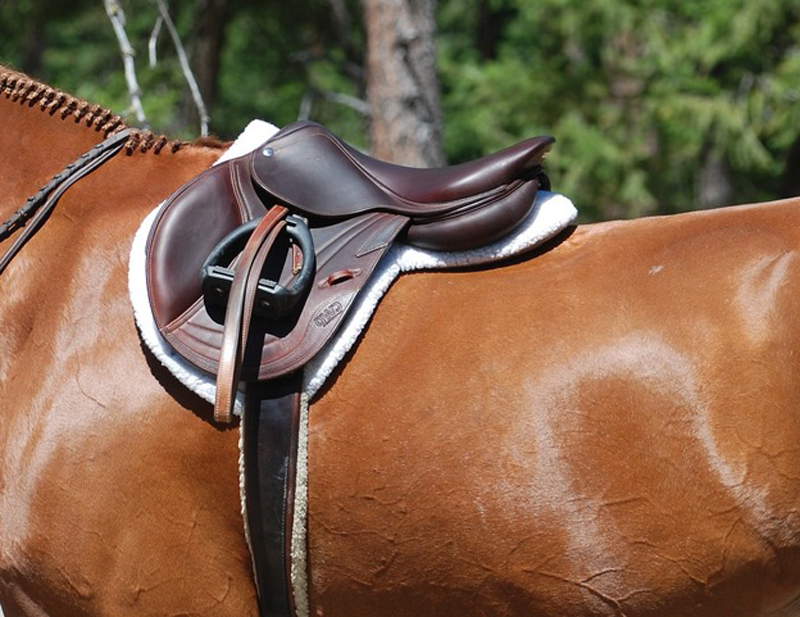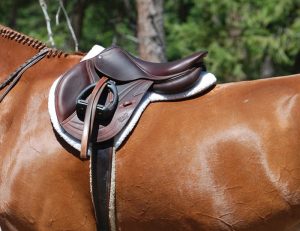
Do you have trouble staying balanced over your feet? Does your saddle slip back during your ride? Does your horse hollow his back, go on the forehand or take 20 minutes to “warm up” before he is ready to work? Maybe he is trying to tell you something!
Next time you tack up pay attention to where you are placing your saddle. Do you put it over the withers? Is it on your horse’s shoulder blades? Is the seat angled high to low from front to rear? A too-narrow saddle may be the cause but many riders place the saddle too far forward on the horse’s back, tipping the saddle out of balance, causing pressure points, back soreness, front end lameness and making it difficult to ride in balance. If your saddle isn’t fitting well the 20-minute warm up could indicate that your horse must become deadened to the pain before he begins to more freely.
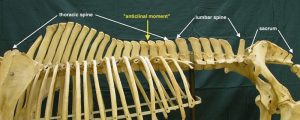
A level saddle will distribute the rider’s weight over a larger surface area, decreasing the pressure in any one place and positioning the leg underneath when the stirrup bar is correctly positioned. The rider has an ear, shoulder, hip, and ankle alignment on the flat with the leather hanging vertically. For jumping the stirrup bar should be further forward so that the rider remains over her feet.
If the saddle is high in front the rider is placed in a chair seat because the distance from the stirrup bar to the deepest point in the seat increases. If the saddle is sitting low in front caused by being too wide or placed too far back, the rider will feel very insecure because the distance from the stirrup bar to the deepest point decreases. This can put pressure directly on the horse’s withers. Therefore both width and placement can affect the levelness of the saddle.
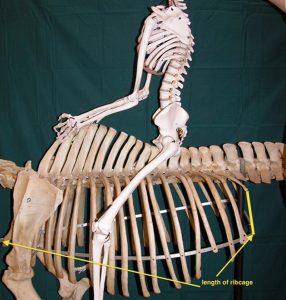
I was taught to place the saddle and pad up on the horse’s withers and then slide it into place behind the shoulder blade in order to ensure the hair was lying flat. This second step as of late has been largely forgotten or ignored. A too-forward saddle is commonly seen in Hunters and Jumpers but I also this in other disciplines. In some cases the saddle is too long therefore it sits on the shoulders and hits the horse in the loins or hips such as with many western saddles. In other disciplines the saddle is simply improperly placed and kept forward with a breast collar or the horse has very high withers. The saddle must clear the withers at all times otherwise it is like tapping on your shinbone with a hammer! A high-withered horse needs a saddle with a thicker panel all the way through so that the saddle sits level. Stuffing more padding under the back simply increases the pressure at the points of the tree while still potentially hitting he withers therefore this is not a good solution.
One reason many riders put the saddle too far forward to be over the horse’s center of gravity (COG). But the old concept that the horse’s center of gravity is behind the elbow is wrong. The horse’s COG is further back between the 12 – 14th ribs! Locate the COG by following along the dorsal processes until you come to the lowest point known as the “anticlinal moment”, where the dorsal processes of the thoracic vertebrae change from angling backward to angling forward. The horse’s center of mass is below deep within the body. The saddle should sit level while spanning the back from behind the shoulder blade to the last rib and place you over the COG.
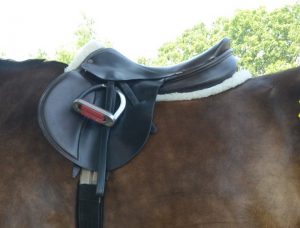
Use this Murdoch Minute to check that your saddle is level on your horse’s back. Be sure to slide your saddle into place behind the shoulder blade. When level your weight is evenly distributed over his ribcage and you can balance over your feet. For more information on saddle fit read Dr. Joyce Harman’s Pain Free Back and Saddle Fit Book available for Western and English Saddles and always remember to enjoy the ride!
Wendy Murdoch is available for lessons and clinics in the Northern Virginia region as well as throughout the United States. She teaches riders of all levels and disciplines how to improve the horse’s performance by improving their body position. Take a look around the website to find more articles, blog and her book 50 5-Minute Fixes to Improve Your Riding, based on the Murdoch Minutes.

